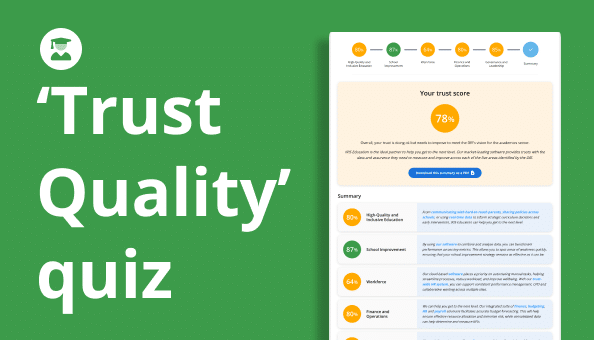BLOGS
Six tips to help sharpen your recruitment arrow

Bad news for businesses.
It is expected that the problems around staffing and recruitment will remain in 2024.
Our latest survey found while 72% of businesses have plans to grow in 2024, more than half ranked staffing and recruitment as their number one issue hindering these aspirations.
Pressure persists for HR to bring in good people, but HR teams themselves are stretched.
The recruitment process, in particular, is incredibly time-consuming – from creating and posting job descriptions right through to securing the chosen candidate.
Of course, some businesses use recruitment services, but many simply can’t afford this option.
Gartner’s research further confirms that HR is increasingly burdened with demands and rising requests from the business for support.
So, how can you optimise your time and improve your recruitment efforts and fill desperately needed roles? Here are six tips.
1) Widen your target audience
Setting too high expectations could alienate a vast pool of possible applicants.
Consider if you are asking too much of your candidates.
Do they really need a degree and three years of experience specifically in your sector to thrive in the role?
You would do better to consider cultural fit and transferrable skills as the primary criteria.
Be open-minded to candidates from other sectors and people more junior to the level you are hiring for.
You can train skill, not cultural fit.
This approach helps you reach a larger number of prospects that could well be more suitable.
2) Make your business look attractive
It really is a candidate-driven market, so you need to showcase your business in the best possible light.
Adverts must do more than just sell the job – you need a ‘showpiece’ to encourage candidates to apply for the roles.
Highlight what you stand for as a business, describe your culture and communicate your company accolades.
Additionally, don’t ghost applications from the people you don’t want to hire.
They could be your future customers or employees.
Everybody deserves a response and, with the right process, there’s no need to take shortcuts that could damage your brand.
3) Make time to hire quick and nimble
Time-consuming manual processes slow down the time to hire, which directly impacts your agility when securing the talent you want.
Best practice is to create, publish, attract and fill a role within four weeks.
To compete for candidates, and not risk losing them somewhere in the chain, this is the sort of speed you should be aiming for.
With strong HR processes, this speed is entirely achievable.
Note: there can be many steps in the recruitment process that require human intervention, and this can create hold-ups. Having one centralised system helps track key milestones and map out workflows to prevent blockages from slowing the process down, enabling you to easily see where the hold-up is and who’s next in the chain.
4) What to outsource (if you have that luxury)
There’s no question that recruitment budgets are tight and in-house teams are realising the value of putting internal processes in place.
Agencies can provide as much or as little assistance as needed but some now offer a flat fee for a candidate sourcing service.
These external recruiters allow you to buy a number of credits to suit your recruitment needs instead of a commission percentage per candidate, offering a cost-effective way of procuring outside expertise.
5) Leverage AI and automation tools
The following list shows the areas where AI and automation can be best used to support the recruitment process and make it fair and equitable:
- Role sign-off/authorisation
- Advert/job description creation
- Job publishing - on the channels pre-defined for that sort of role
- CV passing – automatically populating application forms from the applicants’ CV
- Acknowledging application receipts
- CV redaction – with pre-defined scoring on minimum requirements, stripping out personal information
- Templated communications around the interview process
- Interview time self-selection – saving to-ing and fro-ing on available slots
- Interview scoring - presenting a cumulative score, judging all on the same criteria
Of course, some areas need to stay with a human.
Algorithms that sift CVs are not highly regarded, for example.
They may introduce bias, you lose that gut feeling and an algorithm cannot truly read the sentiment, value and cultural fit of the candidate.
6) How to secure the candidate once you’ve found them
To avoid losing candidates to counter offers and dropouts, it is vital you keep them engaged following an offer.
Make candidate engagement your number one job, moving them through the final part of the recruitment journey via a high-touch process.
Provide an onboarding portal – something personalised that welcomes them to the team, outlines what they need to do, houses all the necessary documentation and gives them plenty of opportunity to engage before their first day.
You can also speed up the time to hire by automating the referencing process and online checks.
Good recruitment software enables you to stipulate at what stage they are requested and sends automatic emails and reminders.
The candidate is automatically sent a list of checking providers and the results process is all automated.
Striking a balance
Businesses need to strike a balance between using technology automation and AI tools and maintaining a personal touch.
This balance is absolutely possible.
Part of the challenge is knowing what technology to use and when.
Your technology choices should centre around time-saving tools that speed up your time to hire and improve overall candidate experience while keeping your recruitment processes consistent, fair and compliant.
We covered this topic in more detail on our podcast channel with Apprentice winner, recruitment expert and Founder of Phoenix51, Lee McQueen.
You can listen to it here on our HR podcast: Sharpening your recruitment arrow













